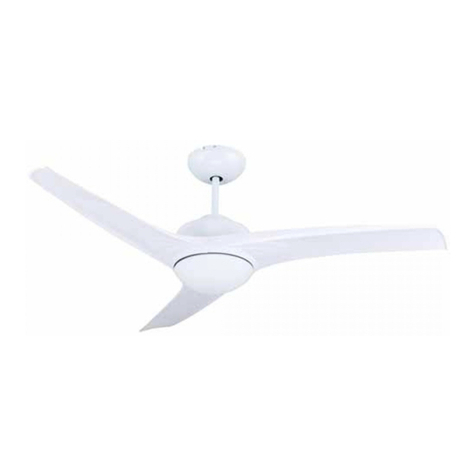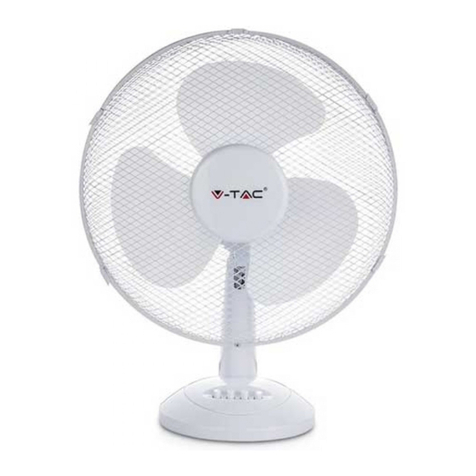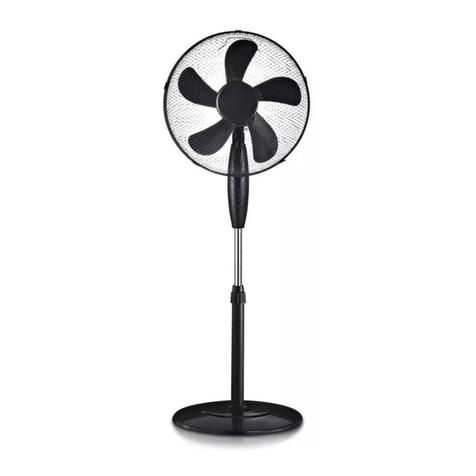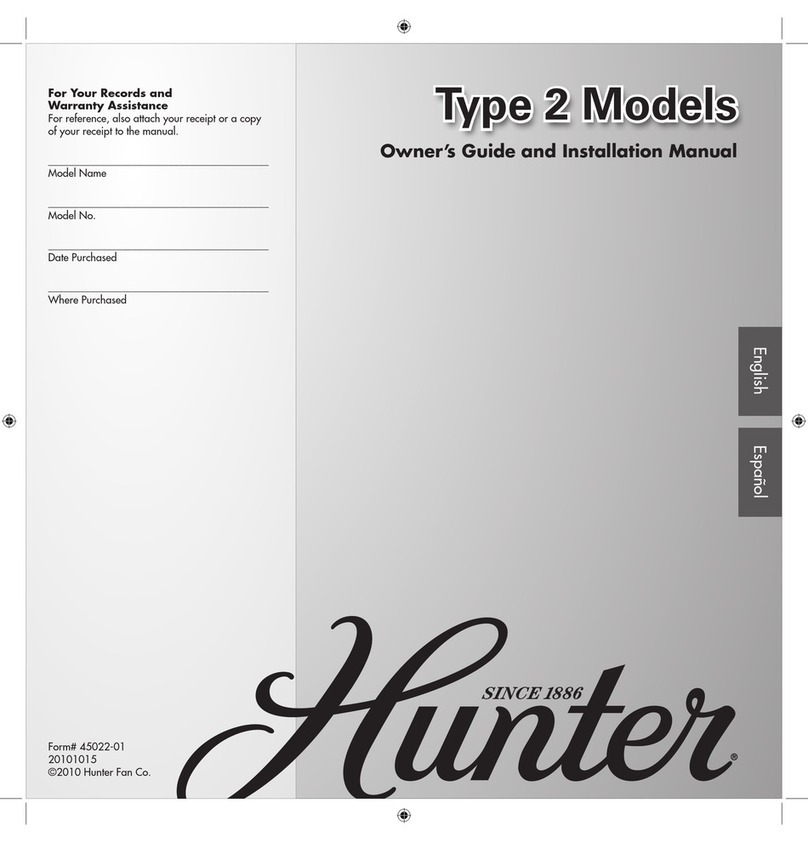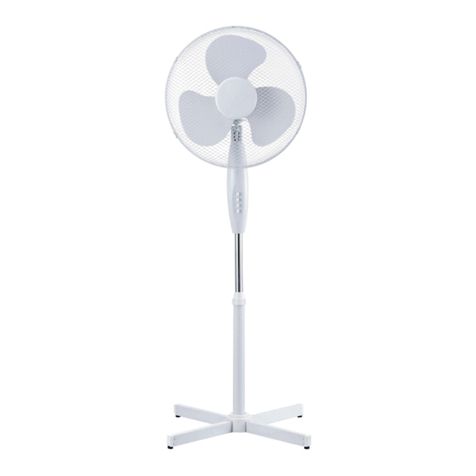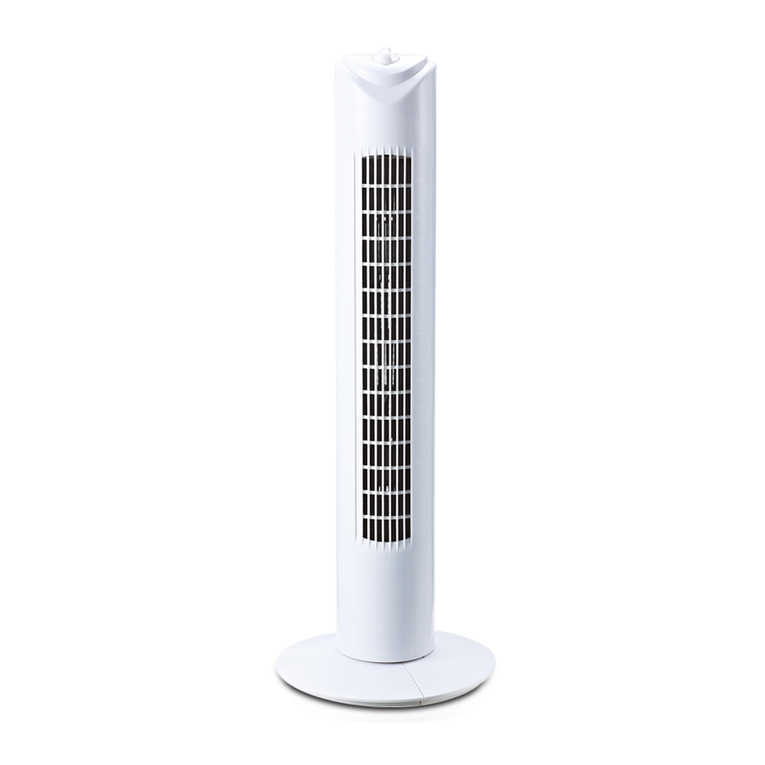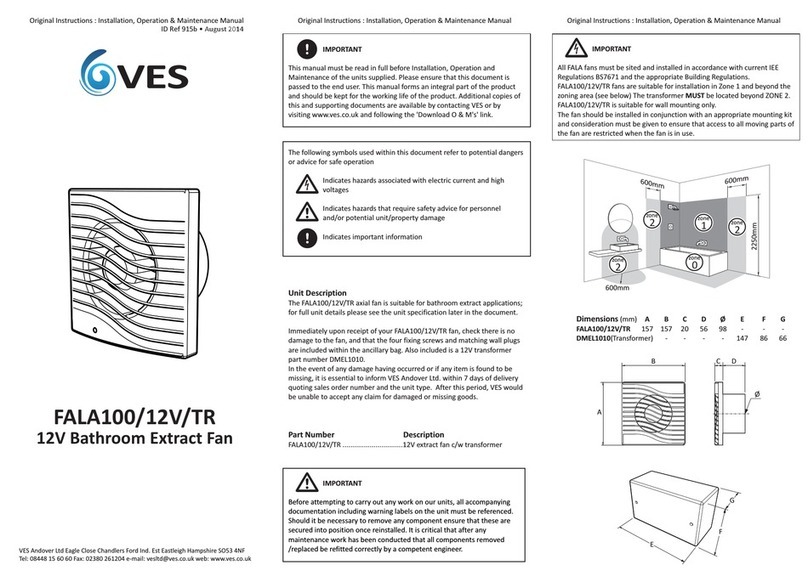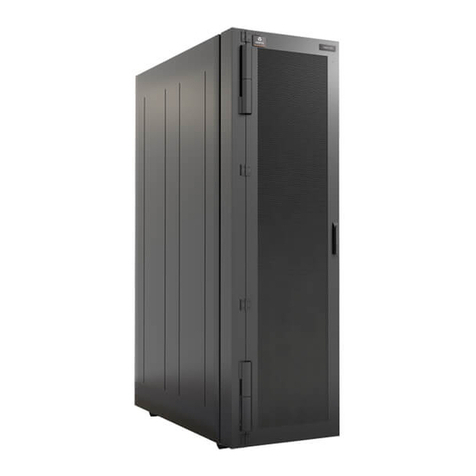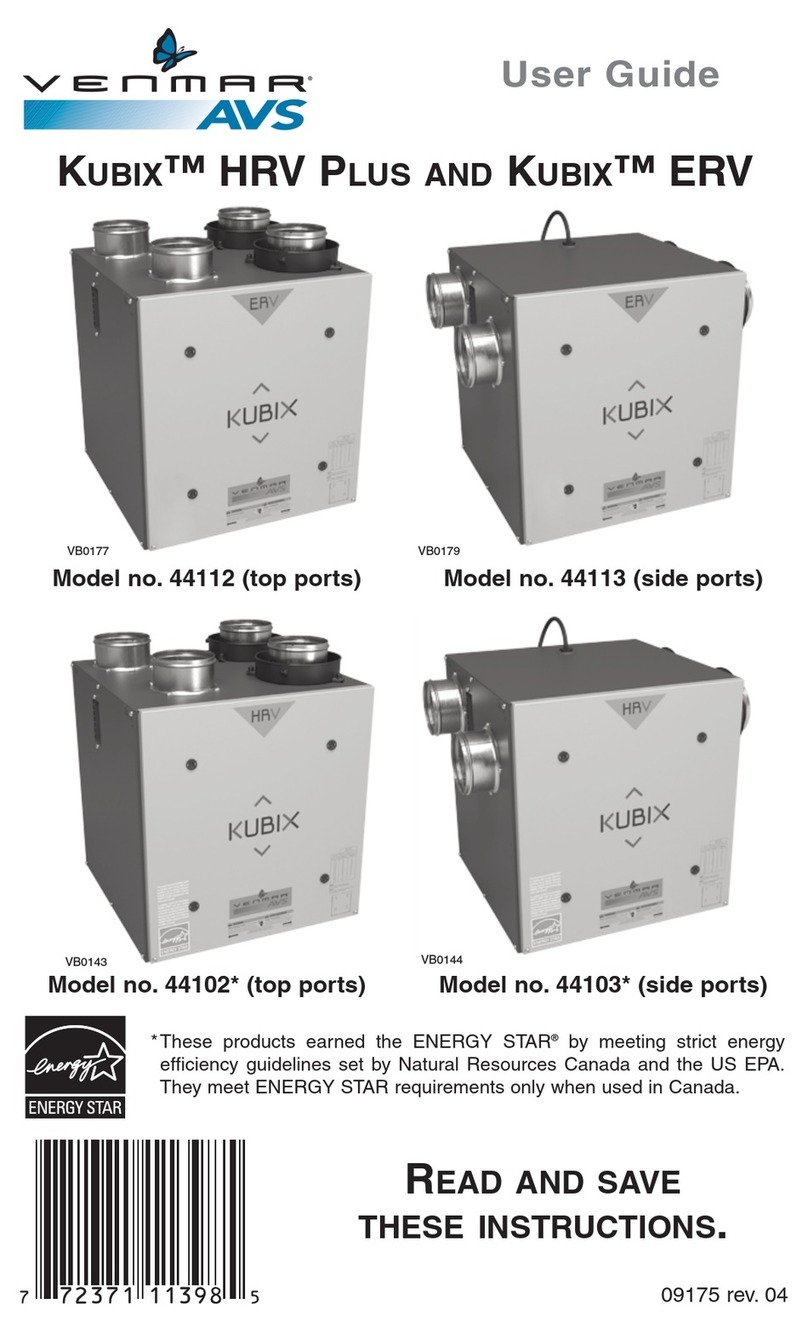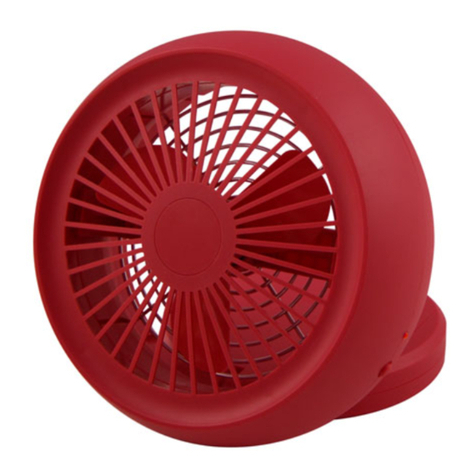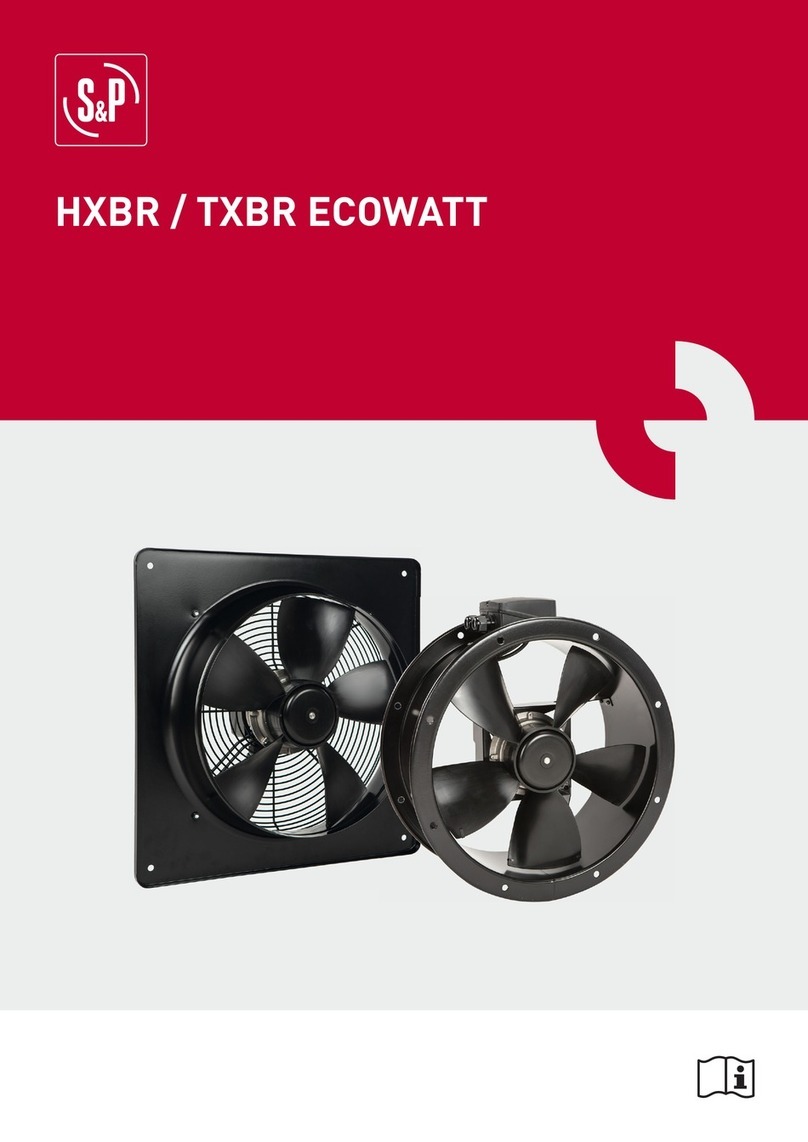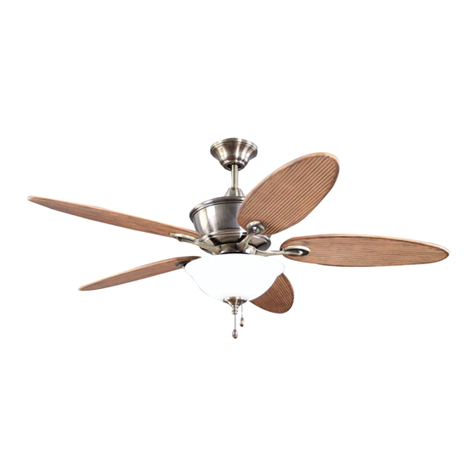
• Do not use the appliance in confined spaces with explosive or toxic vapours.
• This appliance can be used by children aged from 8 years and above and persons with
reduced physical, sensory or mental capabilities or lack of experience and knowledge if they
have been given supervision or instruction concerning use of the appliance in a safe way and
understand the hazards involved. Children shall not play with the appliance. Cleaning and user
maintenance shall not be made by children without supervision.
• Make sure you install all-poles disconnection switch with a minimum distance of 3 mm
between poles in the supply wiring to the ceiling fan.
• Make sure the installation site will not allow the rotating fan blades to come into contact with
any object and that there is a minimum distance of 150mm (6”) from the blade tip to the wall
or ceiling. Please note that the bigger this distance is, the more airflow the fan will produce.
• Switch off the power before connecting or repairing the fan.
• The electrical wiring must be in accordance with the local regulations.
• The fan must be properly grounded to avoid the risk of electric shocks. Never mount the fan
in a moist or wet room. Be careful when working near the rotating blades.
• This appliance must be installed in accordance with the national electrical installation regula-
tions.
• Ensure that the fan is switched off from the supply mains before removing the guard.
• If unusual oscillating movement is observed, immediately stop using the ceiling fan and con-
tact the manufacturer, its service agent or suitably qualified persons.
• The replacement of parts of the safety suspension system device shall be performed by the
manufacturer, its service agent or suitably qualified persons.
• The mounting of the suspension system shall be performed by the manufacturer, its service
agent or suitably qualified person.
• In order to ensure your children’s safety, please keep all packaging (plastic bags, boxes,
polystyrene, etc.) away from their reach.
ENGLISH
WARNING
Connect electrical wires accurately according to the diagram. (Fig 9)
Connect AC: 200-240V main power (dwelling) to the receiver for Remote Control and connect
the wires following. Insert the quick A and quick plug B, quick plug C and quick plug D
To avoid possible electrical shock, be sure electricity
is turned off at the main fuse box before wiring.





